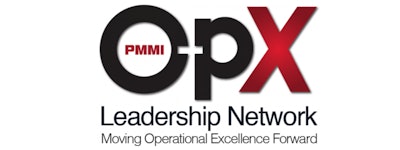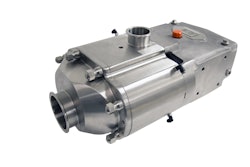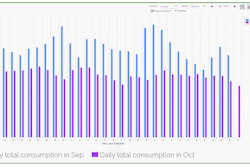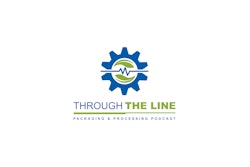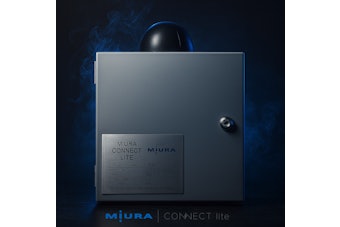Scott Spencer ran into trouble when he tried to get a new packaging machine installed in a plant whose equipment he oversees in Deerfield Beach, Fla. As vice president of engineering for Nature's Bounty, he was delighted when he found a showroom model of the machine. The vendor told him it would be ready in two months. Unfortunately, two months turned into four months, with no end in sight. “Our relationship went way downhill with this vendor,” Spencer recalls. “They were mad at us. We were mad at them. We had calls and we’d get nowhere.”
There was clearly a miscommunication between the manufacturing team at Nature’s Bounty and the vendor. “We kept giving them new requirements,” Spencer says. “They kept telling us, ‘Well, we’ve got to change the machine to make that requirement.’”Spencer discovered the hard way that, without a plan to get vendors in alignment with the goals of a manufacturer, time, money and the productivity of an operation are at risk. It’s a situation that’s all too common as manufacturers seek new equipment from vendors, says Greg Flickinger, vice president of manufacturing at HEB, who also serves as chair of the OpX Leadership Network Executive Council. Fortunately, Flickinger says, the OpX Leadership Network—managed by Automation World’s parent organization, PMMI—provides the answers needed to prevent such miscues from occurring. It’s just a matter of knowing where to start.
Getting started
When Flickinger came on board at HEB in 2016, he already had extensive experience developing the tools offered by the OpX Leadership Network. So it was natural to introduce those tools to his new organization. He also asked two of PMMI’s leaders, Tom Egan and Steve Schlegel, to present to the operations and engineering teams at HEB and answer questions from Flickinger’s new colleagues. Seeking help from OpX Leadership Network experts is a step Flickinger recommends to any manufacturer that wants to get started with the OpX Leadership Network tools. “It really helps solidify not only the value of the tools, but it brings in someone else besides the voice within your own organization,” he says.
Initial contact with the OpX Leadership Network begins with the organization’s website, where users can download the tools and ask for expert help free of charge. “PMMI will either support directly, by coming in to facilitate a session with the team, or they can link you to the right industry subject matter expert from the tool development team,” Flickinger explains.Flickinger further recommends bringing as many stakeholders as possible into the discussion right at the onset of using the OpX Leadership Network tools. In his case, he made sure to include the engineering and technical leaders from his company’s plants, including directors of operations, plant managers and finance. The group then modified the tools as needed to suit the needs of their company with input from everyone involved. “As a result,” Flickinger says, “people use it as opposed to throwing it up on the shelf and saying, ‘I'm just going to do it my way.’ The approach reduces resistance and creates ownership.”
Jim Prunesti, vice president of engineering for Campbell Soup, also recommends getting equipment vendors involved in early discussions about the OpX Leadership Network tools—particularly the total cost of ownership (TCO) checklist. “I encourage vendors all the time to come in and talk to me about total cost of ownership,” he says. “If the equipment supplier is coming in and talking to me about ‘My piece of equipment’s cheaper,’ it doesn't really gain my interest as much as, ‘Let me help you understand what’s the total cost of ownership, and what's the flexibility or capability of the equipment that we're proposing for this solution.’”
Prunesti advises vendors even considering working with the TCO checklist to download it from the OpX Leadership Network website. Whether it’s because a potential customer has asked them to, or because they want to stand out from the competition, having access to the checklist is beneficial. Most vendors will already have a good idea of how to fill in the checklist, he says, based on the ongoing costs they already know their equipment incurs.
Applying the tools
Spencer has found the OpX Leadership Network’s overall equipment effectiveness (OEE) tools—the OEE starter tool and the OEE benefits calculator—especially valuable. These two tools enable a manufacturer to first calculate a percentage of efficiency—both before and after a proposed capital investment is made—and then translate those percentages into dollar figures. The process helps justify the cost of making new investments.
Spencer’s team also uses the workforce engagement tool. “The workforce engagement tool should be mandatory reading for any leader in the manufacturing space,” he says. “It's a lengthy document, don't get me wrong, but it's a very detailed methodology to engage your workforce.” Calling his company’s people its strongest asset, Spencer advises anyone deciding where to start with the OpX Leadership Network tools to begin with workforce engagement. “That's an incredibly powerful tool.”
To further encourage engagement, Spencer’s team also uses the factory acceptance test (FAT) checklist. The tool helps manufacturers and vendors align with the requirements for new equipment—even before the first contract is signed. “If you engage your operators and mechanics using that tool, they get automatic buy-in because now they're getting input ahead of time before the equipment shows up on their factory floor,” he says.
Applying the tools at the start of the acquisition process is well worth it for the time—and, ultimately, money—savings down the road, Prunesti points out. “I’d rather spend the time upfront, get the spec right, get the scope correct and then move forward,” he says. “Then there's less change later, and those changes will typically add time that more than offsets spending the time upfront.”
To get any holdouts on board with the OpX process, Prunesti uses the analogy of a home improvement project or other big personal purchase. “When you’re making a personal decision, whether it’s a home remodeling, whether it’s purchasing a car—whether it’s anything—do you do that without putting together a plan? Without at least having a specific scope in mind of what you want to do?”
All the OpX Leadership Network tools are intertwined—designed to be used in concert, Flickinger says. “It’s like a golf swing. You can’t just work on one element and think you’ve fixed everything,” he says. “They all have to work together to some degree. At different points in the process, different elements take priority.” Even so, Spencer points out, you don’t have to use all the tools at once to benefit from them individually.
Reaping the benefits
The benefits of using the tools apply to the workforce at a manufacturer as well as to the company and its vendors, Flickinger explains. “One of our primary goals as a company is to create ownership,” he says. The workforce engagement tool helps HEB to do that. Besides guiding leaders on how to empower workers with more decision-making authority, the engagement tool offers a roadmap to improved quality and productivity through people, Flickinger says.
He recalls an incident that occurred when he worked at a previous company where workers were empowered to shut down a snack food production line if they saw impending quality issues before they became serious. It took courage for an hourly worker to shut down the line, Flickinger says, but the result was a more engaged workforce that produced better quality products with less waste. “If you can catch these problems early, you can eliminate product holds, scrap and product throwaway,” Flickinger says. “There’s a huge savings; a financial savings.” The workforce engagement tool is designed to capture this type of savings.
The OpX Leadership Network also helps develop leadership at participating companies. Spencer says members of his team contribute to the creation of the OpX Leadership tools because it gives them a chance to learn from the leaders of other companies alongside them. Participating in the work of the OpX Leadership Network lets Spencer and his managers learn from the processes of other noncompeting companies. “It’s almost like having a bunch of mentors that you can just call and say, ‘Hey, I’ve got a problem,’” Spencer says. “I’ve done it a number of times.”
Ultimately, the benefit of using the OpX Leadership Network tools comes down to dollars. Prunesti says his organization has realized savings of up to 15 percent in the purchase of new equipment by using the tools. These savings, he says, are driven not by a reduction in initial capital costs, but rather a decrease in ongoing costs—costs that would have remained hidden without the tools.
OpX saves the day
After struggling with the vendor for a new cartoner on a Nature’s Bounty’s packaging line in Deerfield Beach, Spencer and his team got some help from PMMI’s Schlegel, managing director of the OpX Leadership Network, who volunteered to help the team and its vendor use the OpX Leadership Network’s FAT checklist.
In only a month, the tool helped the team and the vendor align their expectations for the carton machine and to get those expectations down on paper for all to agree upon. “It completely repaired the relationship,” Spencer says of his team’s resulting interaction with the vendor. Perhaps most importantly, the cartoner is now up and running and Nature’s Bounty has been able to realize the savings identified by the OEE tools.
For anyone considering whether to engage the resources of the OpX Leadership Network, Spencer advises jumping right in. “The people are great, the tools are effective, and I like the community and the opportunity to give my team something to look forward to as a reward,” he says. “It’s worked pretty effectively for me.”
Download the TCO checklist, the FAT checklist, the OEE starter tool, the OEE benefits calculator and many other resources at www.opxleadershipnetwork.org.
